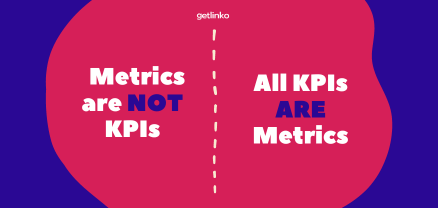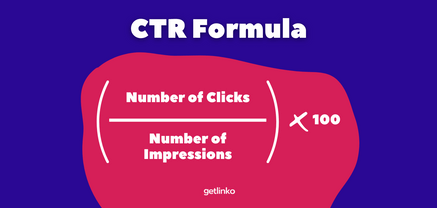On every website, it is necessary to carry out continuous improvement actions to attract quality traffic, increase visibility, and capture the attention of new customers. That’s exactly what search engine optimization, better known as SEO (Search Engine Optimization), is all about. Well, it is a strategy focused on getting a website to appear in the first results of search engines such as Google, Yahoo!, or Bing. However, for it to be successful, it is not enough to execute it; it is also essential to analyze and understand SEO metrics. These allow you to monitor results and evaluate the performance of a website.
They are also crucial for monitoring the evolution of the strategy and determining its effectiveness. This is based on a series of quality guidelines and relevant factors for search engines. Then, through a judicious analytical process, it is possible to correct mistakes and make sound decisions. Therefore, here we will talk about 15 SEO metrics to analyze the performance of your website and improve your organic positioning strategy.
Contenido del Artículo
- What are SEO metrics?
- KPIs & Metrics: Difference
- How to measure the SEO of a website?
- The 15 SEO KPIs You Should Monitor
- 1. Indexing Status
- 2. Ranking Keywords
- 3. Visibility in the SERPs
- 4. Organic Traffic
- 5. CTR (click-through rate)
- 6. Conversion Rate
- 7. Time spent on site
- 8. Bounce Rate
- 9. Backlinks
- 10. Referral Traffic
- 11. Loading Speed
- 12. Website Authority and Quality
- 13. Exit Page
- 14. New vs. Returning Users
- 15. Mobile Visibility and Performance
- How long will it take to see SEO results?
- Final Words
What are SEO metrics?
To begin with, it’s important to clarify what we mean when we talk about SEO metrics. These are parameters or values that allow you to monitor and compare optimization actions in search engines. Therefore, they provide a global perspective of the state of a website. All optimization actions are aimed at achieving specific objectives and must be measured to determine the percentage they contribute.
For this, KPIs for SEO (key performance indicators) must also be defined and monitored. These are measurable values that indicate the performance and effectiveness of the strategy. It may seem that metrics and KPIs refer to the same thing, but this is not entirely accurate. While it is true that both are quantifiable measures tracked in an SEO process, they have different characteristics.
KPIs & Metrics: Difference
Firstly, KPIs are aligned with strategic objectives and allow us to know if these have been met. In other words, they measure the performance of actions against objectives over a time range and are essential in determining whether the process is successful or not. On the other hand, metrics are data derived from the strategy but are not necessarily indicators of its success. In other words, they allow you to optimize and improve the SEO process, but many of them are unnecessary to determine if the objectives have been achieved.
In this sense, metrics are not KPIs, as they are quantifiable parameters that allow SEO results to be tracked. They are used to track the status of the process; however, some of them are not indicators of its effectiveness. On the other hand, all KPIs are metrics, as they are measurable values that are obtained by performing SEO actions.
In short, with KPIs, it is possible to define the metrics that are essential in determining whether an SEO strategy is effective or ineffective.

How to measure the SEO of a website?
Now that we’ve defined SEO metrics and KPIs, it’s time to dive into the nitty-gritty and explain how to track these parameters. So, if you have a website and want to know how SEO is measured, you should start by identifying and defining the objectives of your strategy. Then, you can determine what you need to track based on meeting those goals. The thing is, there are dozens of metrics, but there is no standard list of those relevant to every company or project.
In this sense, SEO objectives vary according to the type of website (e-commerce, blog, corporate website, directory, etc.), its functions, the need to which they respond, and the business goals. Therefore, the monitoring of SEO metrics should be based on these factors, in addition to being done according to the evolution of the strategy.
That said, it is pertinent to mention some of the key tools that make it possible to monitor the results and follow up on the process. These tools allow you to know relevant metrics about a website and its performance in search engines. Let’s see what it’s all about:

1. Search Console
Search Console is a free service from Google that allows you to monitor and monitor the appearance of a website on search results pages (SERPs), so it works to find and resolve technical errors related to its performance. In addition, it helps to understand and improve the way Google sees and perceives the site. Its main features include:
- Confirm that Google can find and crawl a website
- Resolve indexing errors
- Request indexing of new or updated content
- See website traffic data in Google Search
- Troubleshoot mobile usability and search features
This is an indispensable tool for obtaining SEO metrics, as it provides key data in order to improve organic positioning. In the same way, it is useful to make convenient decisions regarding the operation of a website and its presence in search results.
2. Google Analytics
Google Analytics is one of Google’s free tools and, perhaps, the most recognized and used to obtain SEO metrics. It provides statistical data and KPIs about traffic and user behavior on a website. This makes it possible to analyze and monitor the results of the search engine optimization strategy.
Google Analytics can also integrate with other Google services such as Ads and Search Console. In addition, it is ideal for monitoring the profile of users accessing a website, as well as the most visited sections, access devices, geographical location, conversions, and many more factors.
3. SEMrush
SEMRush is an all-in-one SEO tool that has become a favorite for analyzing and comparing results. It is used to obtain many metrics about the positioning of a website in the search results. It’s also great for analyzing backlinks, getting domain data, and conducting technical SEO audits. There, it is possible to study various factors such as:
- The most relevant keywords for the website
- Positioning keywords in organic results
- The strategies implemented by competitor websites
- Backlinks from your own website and also from other sites in the same niche
SEMrush has a free version that allows you to get a basic overview of the website, as it limits many of its functions. On the other hand, it offers different paid plans with great advantages.
The 15 SEO KPIs You Should Monitor
It is clear that SEO metrics and indicators are indispensable to understanding the behavior of a website, as well as to determine the effectiveness of the actions executed and improve the optimization process. Therefore, here are 15 essential SEO metrics to monitor and measure the results of your strategy.
1. Indexing Status
We know that SEO is aimed at the execution of actions to improve the positioning of a website in search results. Therefore, there is no point in having a fast site, good content and attractive design if it cannot be seen and crawled by Google. That is precisely what indexing refers to; Google robots (crawlers) find the website, analyze it and store its information in the search engine’s index.
The indexing process is not automatic in all cases, so there are certain basic steps to occur in order for Google to crawl a website, such as creating a sitemap. That is a file that contains all the URLs that make up the website in hierarchical order. It is also necessary to create a robots.txt file, whose function is to tell Google which pages and contents of the site should crawl and which should not.
There are a couple of ways to check and monitor if a website has been indexed. The first is by typing the command “site:misitioweb.com“ into the search engine, where “misitioweb.com” is the URL of the main page without the prefix https://. This allows you to get an idea of the site URLs that have been indexed. In the following image you will see an example:
The other way is through the Google Search Console tool in the indexing coverage report. There, the status of all the URLs of the website with respect to Google’s index is displayed. Here’s what the indexing status looks like in the Search Console pane:
2. Ranking Keywords
Monitoring keywords is one of the essential SEO metrics to validate a website’s performance in the search engine. It allows you to analyze how you are positioned with respect to specific queries and in relation to the competition. Let’s remember that keywords refer to the terms or phrases that users search for to find a certain piece of content.
Therefore, a website must be optimized based on a study of keywords related to the niche or sector of interest. This study can be done with Google’s Keyword Planner tool, which allows you to find the keywords —and their search volume— that work best for a website according to what users are looking for.
So, to analyze this metric and check the positioning of a web page’s keywords, several steps can be followed. The first and most basic is to perform the queries manually in the search engine. This will allow you to see which page and position your site is on in the Google results.
Then, through the Search Console, it is possible to find data about the performance of the website in relation to the keywords of interest. Well, the tool shows which are the main queries for which users have found the site in the search results. In addition, it allows you to know the number of clicks received and the average position in which it appears for each keyword. All for specific periods of time.

3. Visibility in the SERPs
As we have seen, the SERPs (Search engine page results) are the search results. Precisely, it is where the index of ranked websites appears when specific searches are made. Therefore, having visibility there is the first indication that a website is working, in addition to being the starting point to optimize performance and take actions to position yourself in the first search results.
Visibility in the SERPs is closely related to the metrics above, as they are clearly a way to monitor it. However, there are other visibility parameters that can also be tracked. This is due to the fact that SERPs have certain functionalities that allow you to obtain extra visibility. Some of them are:
- Featured Excerpts: They are concise answers to a keyword search. These appear above the first organic position and are also known as position zero.
- Knowledge Panel: These are graphs that provide detailed information about a keyword.
- News: When searching, in addition to organic results, the search engine displays several top stories.
In this sense, the goal of this SEO metric is to determine the number of users who see a website in search results. The way they see it is how it appears in the search engine.
4. Organic Traffic
Organic traffic is one of the determining SEO metrics to monitor the progress of a ranking strategy. It provides data about the flow of visits received throughout the website through the search results. This means that users have found and clicked on the site by making specific queries that include keywords. Therefore, measuring organic traffic makes it possible to get a view of the pages of the site and the keywords that you need to focus on, work on, or improve.
It’s important to note that it’s not enough to only monitor the number of visits your site receives. Also, you should pay attention to other indicators such as the number of new users, the country where the traffic comes from, the duration of visits, etc., and analyze all this data together to determine whether or not the objectives are being met.
To do this, you can use Google Analytics and Search Console. Both tools provide data about the percentage of organic traffic received in a given period and information on the internal pages receiving traffic.
5. CTR (click-through rate)
CTR (click-through rate) refers to the percentage of clicks a website gets from search results (SERPs). This metric is calculated based on impressions, such as the number of times the site is displayed in the search engine when a query is made.
To calculate, the following formula is applied: (Number of clicks/number of impressions) * 100. For example, if your website received 50 clicks and appeared 200 times in the SERPs, the CTR, in this case, would be (50 / 200) * 100 = 25%.

This SEO metric is very useful for studying the percentage of impressions that convert into user visits. In addition, it works to evaluate how striking the appearance of the website is in the search engine. That is if the title, meta description, and URL manage to capture the attention of the user performing the search. In this sense, you can carry out optimization actions and work on achieving some SERP functionalities to increase CTR.
Search Console, on the other hand, allows you to visualize the average CTR in a given period of time, as well as the clicks and total impressions received on a website.
6. Conversion Rate
This is one of the fundamental SEO metrics in a results analysis process, especially for e-commerce sites. However, it is also important for sites or blogs that offer downloadable content, subscriptions, or any resource that involves the user buying or becoming a customer. Therefore, tracking them allows us to know what percentage of the traffic received is being converted into leads. This refers to users who show interest and become potential customers who generate an action or a transaction on the website.
Conversion rate is a metric strongly related to achieving goals. Therefore, the actions that the user is expected to perform (buying, subscribing, leaving data, contacting, etc.) must be defined. So, it is essential that from the beginning of the process, clear and accurate objectives are established that benefit both the user and the SEO strategy.
Conversion rate tracking can be done using Google Analytics. The platform allows you to set goals and monitor the percentage of users who take action and generate conversions on the site. It also has indicators for e-commerce.
7. Time spent on site
This metric refers to the length of time a user is logged into a website and the period in which they interact with the website. Thus, it allows you to analyze whether the content of the website responds to the user’s needs and search intention. In this sense, the dwell time indicator is related to the level of engagement of the page. A long-term session means that the user found valuable information that captured their attention.
Within the Google Analytics dashboard, it is possible to monitor the time users spend on the website. It also allows you to visualize their behavior and which internal pages were of interest to them.

8. Bounce Rate
Some SEO metrics work better when analyzed together, such as bounce rate and dwell time. First, let’s clarify that bounce rate refers to the number of users who enter a website and leave it after a very short time of permanence and without making any interaction, that is, without visiting other pages or sections of the site.
So, this metric allows us to study the factors that influence user churn, for example, unattractive design, difficulties of use, accessibility issues, irrelevant content, etc.
In this vein, if someone enters a website and leaves it without interacting, that visit is a bounce. However, there are certain scenarios that can determine whether the bounce is a negative thing or not. Let’s look at two of them:
- User 1 enters the website, quickly reviews the content, and leaves after a few seconds.
- User 2 enters, stays on the entry page reading the content for several minutes without interacting with another section, and then leaves the site.
Clearly, both cases represent a rebound, but this is where the dwell time plays a crucial role, as it makes the difference between the quality of the two sessions; user 2 found information that answered his search intent.
This doesn’t mean you shouldn’t pay attention to the bounce rate, of course! The higher it is, the more it will affect the positioning. But ideally, you want to work in tandem with dwell time so you’ll get more reliable metrics. In Google Analytics, you can find data regarding the bounce rate of all the pages of your website.
9. Backlinks
External links or backlinks pointing to a website or backlinks are a decisive factor for its positioning in the SERPs. They determine the authority of the domain and can mean an increase in the ranking in the results or receive a penalty. This depends on the quality of the links and whether they meet the search engine’s guidelines. Consequently, it is important that you track your website’s backlinks to analyze and evaluate whether it is necessary to get or buy quality links to improve your link-building strategy.
This is crucial as the quality of the links indicates how much link juice is transferred to a web page. That is, how much relevance and authority those links to the website are conveying. To monitor backlinks, you can use several tools and cross-reference the data provided by each one to obtain more complete metrics.
For starters, in Google’s Search Console, you’ll find the total number of links pointing to your website and the most referenced pages.
Additionally, SEMrush has a tool that allows you to visualize the number and type of backlinks and the attributes of the links.
10. Referral Traffic
From SEO metrics to tracking the flow of visits and related to backlinks, referral traffic is traffic received when a user arrives at a website through an external link. Examples include a social media post, news story, or blog article with a link to the web. Thus, this metric allows you to evaluate the effectiveness of link-building and content marketing.
It is monitored through Google Analytics. There, you will find data such as the number of users, bounce rate, session duration, etc., specifically focused on the referred traffic.
11. Loading Speed

Loading speed is a vital parameter in the SEO process and user experience. It refers to the time it takes for a website to load all of its content, features, and resources when a user enters. This factor directly affects the bounce rate and conversion rate. This is due to the fact that a slow website increases the chances of abandonment by users.
Additionally, a website must not only be fast on computers, it must also pay special attention to performance on mobile devices. Since 2018, Google established loading speed as a determining factor to gain positions in search results.
With all this, the search engine itself offers a tool that carefully details all the elements that influence the speed of a site. This is PageSpeed Insights, where you can check the performance of your page on its desktop and mobile version. The tool handles ranges from 0–49 (to improve), 50–89 (fair), and 90–100 (good).
12. Website Authority and Quality
There are several SEO metrics to indicate a domain’s authority and to determine how effective its ranking will be. These should not be monitored very regularly as their results are more long-term. However, it is necessary to monitor them from time to time to track their progress and propose improvement actions.
These metrics are Domain and Page Authority (developed by MOZ) and Mention and Trust Flow (developed by Majestic). Let’s look at them in detail:
- Domain Authority (DA): This is a ranking score from 1 to 100 that predicts the likelihood of a website ranking in the SERPs. This, according to the domain assessment.
- Page Authority (PA): It’s also a score of 1 to 100, but it predicts how well a specific page on the site will rank.
- Citation flow (CF): Rate the strength of a website from 0 to 100 based on the number of links (external and internal) pointing to it.
- Trust flow (TF): A score from 0 to 100 that measures the trustworthiness of a website according to the quality of the sites that link to it.
13. Exit Page
As the name implies, it is the metric that monitors which users leave the site through pages. That is, the last section a visitor was in before leaving the website. Therefore, it is useful to analyze whether their search intent was answered and if the conversion goals were met.
With this information, it will be possible to improve navigability and optimize the user’s journey on the site. This is in order to guide them more accurately towards conversion. To track this SEO metric, you should also make use of Google Analytics. There, you will see, in addition to the pages, the overall percentage of exits and the number of exits in each section.
14. New vs. Returning Users
The percentage of new users and returning users is an indicator that works to study how the audience responds to the SEO strategy. On one side, there are new users who have found the website for the first time. Contrarily, on the other side, there are returning users who have logged in at least once in the last two years and returned with some intention.
This information can be analyzed in conjunction with traffic sources to determine which channels on the site have the greatest impact and best performance. Likewise, you will be able to improve and optimize the strategy in those that don’t. In Google Analytics, you have access to a complete report with this data.
15. Mobile Visibility and Performance
We end our list of SEO metrics with a parameter that has gained great relevance thanks to the digital revolution. And it’s no wonder if about 90% of all searches made from mobile devices in the world come from Google. Therefore, correct functionality and mobile visibility on websites are vital to positioning themselves in search results.
Undoubtedly, this turns out to be a factor that evidences the quality of a site and contributes to improving the user experience. That’s why Google has its own mobile-friendly test to monitor it. It is checked to verify if a user can easily access a web page from these devices.
How long will it take to see SEO results?
At this point, we are more than clear that SEO is a process where careful planning and analysis are required. Consequently, it must be executed intelligently, considering strategic goals, website features, competitors, keywords, etc. In this sense, the time to obtain results can vary depending on these factors, as they determine the path the strategy should follow and its complexity.
After starting the process and the execution of the optimization actions, you may begin seeing results after the first 3 months of work. Keep in mind that certain factors may show significant progress faster than others. Therefore, it is crucial to be patient, consistent, and analytical in the process. In addition to always monitoring and tracking SEO metrics, these represent the vehicle that determines if the strategy is really effective.

In the same way, it is the results that will guide us in making decisions to improve positioning and respond to the needs of users.
Final Words
There is no doubt that SEO metrics are a key element within the positioning strategy. In addition to helping us track their progress, they allow us to optimize the process and correct errors. In addition, they are essential for decision-making for the health of the website and the needs of the user. This, of course, also contributes to gaining a better and better place in the search results.
We hope that after knowing the measurement tools and understanding the characteristics of the different metrics, you will be able to optimize your SEO strategy to the maximum.



